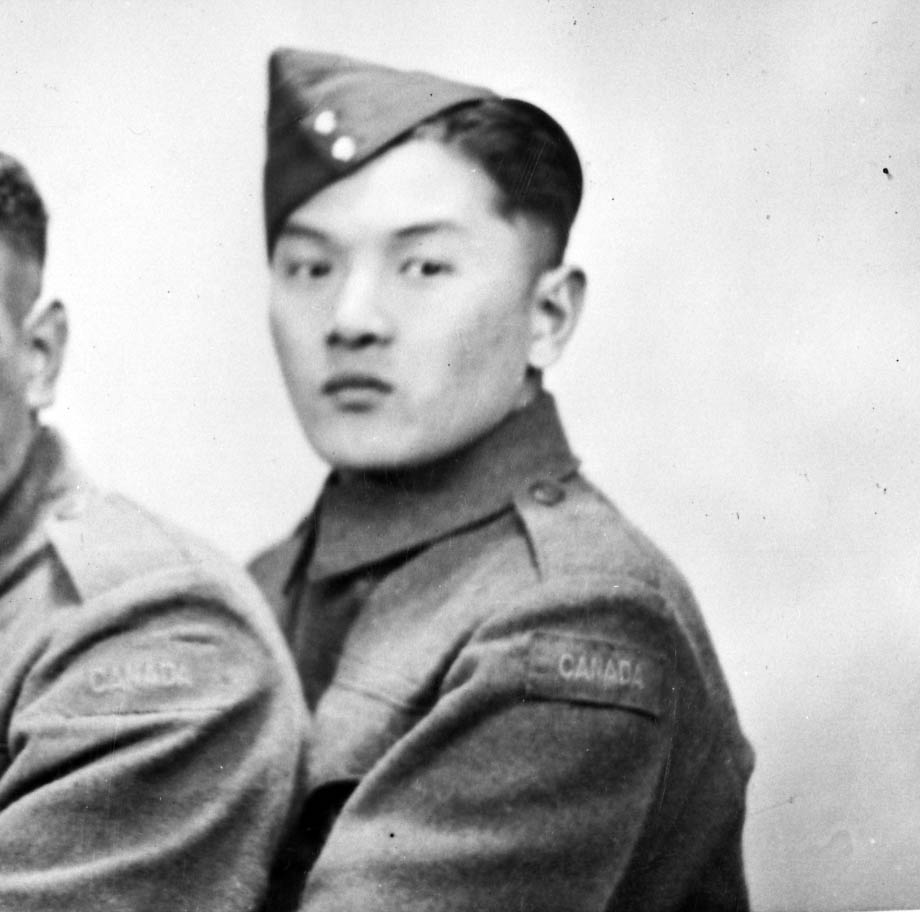Japanese Canadians in the World Wars
“Mrs. C. Matsuaka Soldier, Coaldale Alberta,” photo taken on May 1, 1942, at de Jourdan's Studio in Lethbridge, Alberta.
Photo courtesy Galt Museum & Archives: 199110002800
Almost 10,000 people from Japan immigrated to Canada in the first decades of the twentieth century. This first group of Japanese settlers are known as Issei. Most Issei were from the land-owning peasant class of Japan. They had grown up in the rapidly modernizing Meiji period (1868–1912) when Japan was emerging as an industrialized world power and had come to Canada before the First World War.
In the First World War, eight Issei joined the Canadian army from Raymond. The cenotaph in Raymond lists two of them who died in the war: K. Sugimoto and T. Suda.
During the Second World War, prior to the bombing of the United States naval base at Pearl Harbor, Hawaii by the Imperial Japanese Navy on December 7, 1941, many young Japanese Canadian men had enlisted and were accepted in the Canadian armed forces when Canada declared war against Germany on September 10, 1939. But once Canada joined the allied war effort against Japan on December 7, 1941, many Japanese Canadians were demoted to routine service on Canadian bases.
Flo Senda remembered how second-generation Japanese Canadians, or Nisei, from southern Alberta, enlisted for the Second World War: “When war was declared in Europe and all through the war years, I remember my father going out on Victory Drives. I don’t think the loyalty of the people was ever doubted in the Raymond area. The immigrant was called ‘first generation.’ Those of us that were born here in Canada were called ‘second generation’ or Nisei. And among the Nisei there were several that joined the army. There was Joe Takahashi. He wasn’t sixteen years of age at the time yet but he lied about his age, got into the army. I think he got as far as Halifax, they sent him back because he was underage and he had to do that, I think, twice before they finally took him overseas. His older brother Shin went overseas. Toru Takahashi, Harry Higa, there are others I can’t remember. George Higa went overseas in the Asian theatre of war.”
You can learn more about the history of Japanese Canadians in southern Alberta on the Galt’s virtual exhibit Nikkei Tapestry: Japanese Canadians in Southern Alberta at www.nikkei-tapestry.ca.

